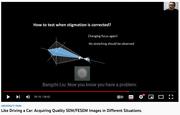After networking with your colleagues in the ATE community at the recent PI Conference, it may be a good idea to evaluate your strategies for staying in touch with partners and colleagues - a good way to start is scheduling social media posts. Scheduling allows you to reach your target audience when they are online. Plus, it increases the relevance and timeliness of your posts, tweets, and networking. When is the best time to post on social media, and is it the same across all platforms? Below are some guidelines.
- Twitter: Twitter users are most active between 8 am and 7 pm. Tweets posted during these hours will generate the most interaction. Still, several smaller time slots see a significantly higher engagement rate. To get the most out of your tweets, consider posting between 8 am and 10 am, 11 am and 1 pm, or 4 pm and 7 pm.
- Facebook: Facebook usage tends to be a little more constant than Twitter, but some times are still better than others for reaching your audience. The best time to post is between 1-4 pm when click-through rates tend to be at their highest. There is also significant usage over the weekend, so consider scheduling posts to be released between 10 am and 1 pm on Saturdays and Sundays.
- Instagram: Instagram was designed exclusively for mobile access, so users tend to use the network all the time, at any time. However, peak times for posting to Instagram have shown the most interactions in the evening between 8 pm-9 pm.
- LinkedIn: LinkedIn is the largest business network and is excellent for connecting with industry partners, educators, administrators, and students. Users check their accounts twice daily, allowing two time slots to touch base with your network. The social rush hours on LinkedIn are between 8 am and 10 am and between 4 pm and 6 pm, with Tuesdays, Wednesdays, and Thursdays being the most active days of the week.
Check out this blog by HubSpot to learn more about optimizing social media engagement.








